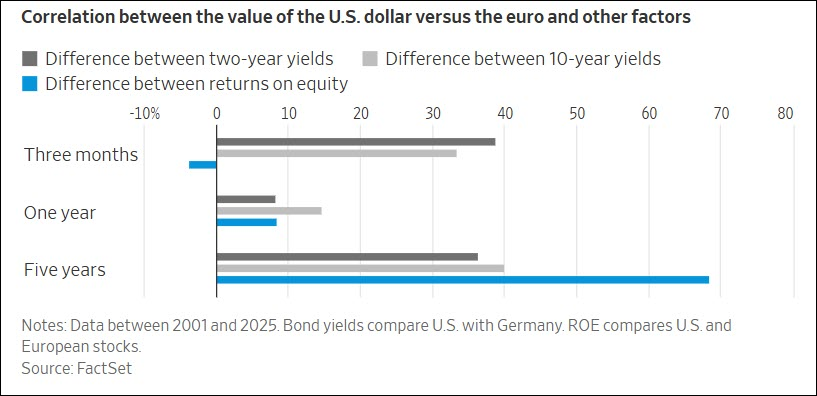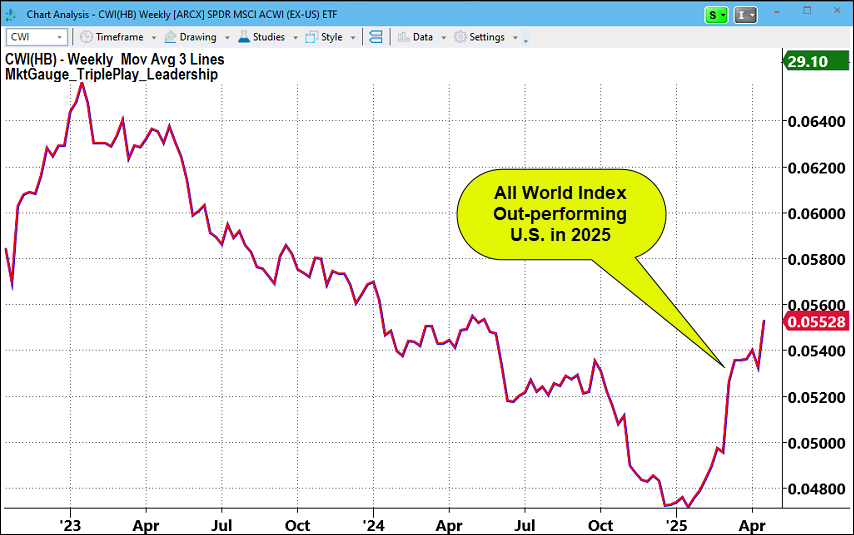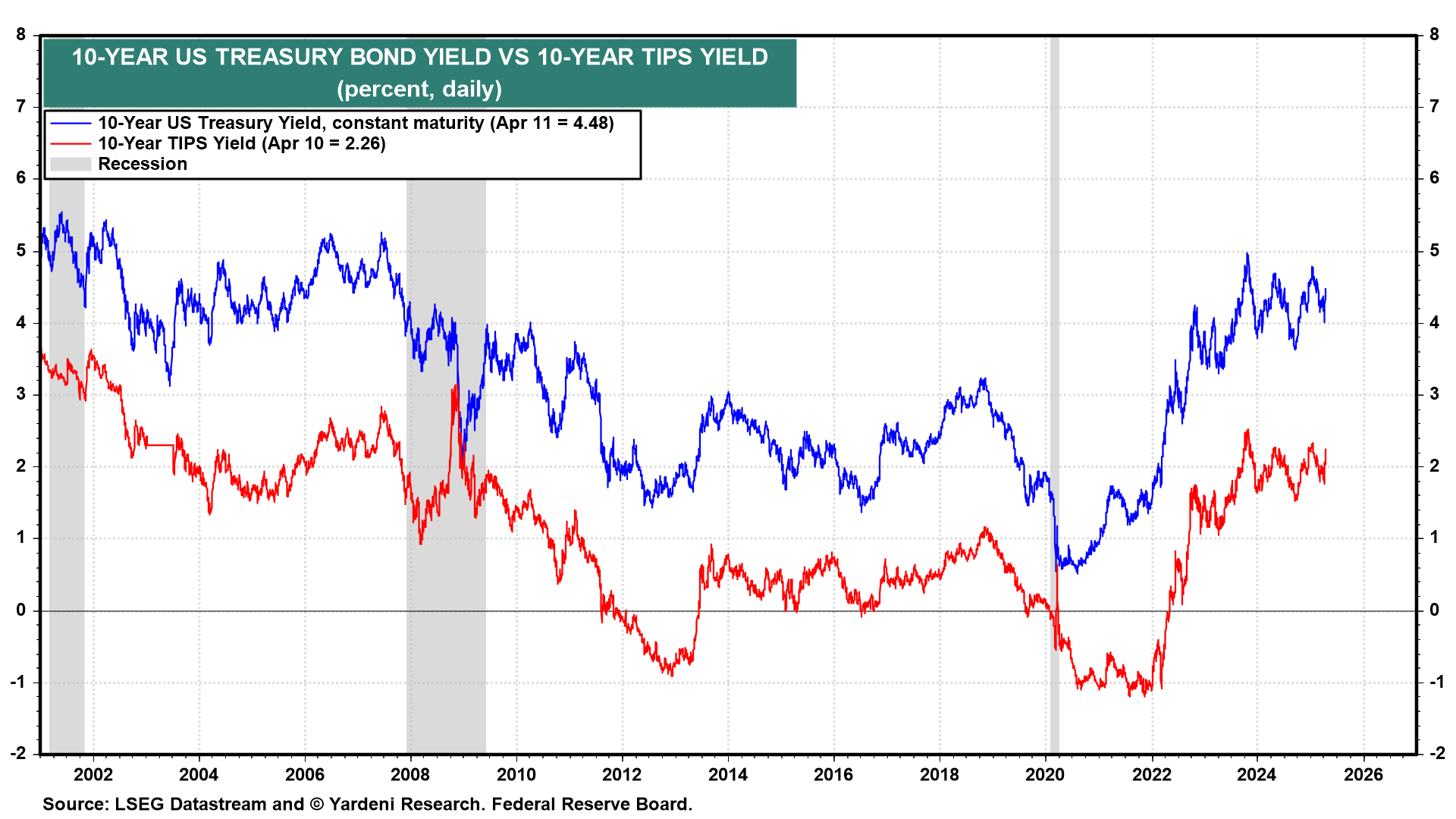The media will constantly remind us that the
S&P 500
is down about 10% and the
Nasdaq
is down about 13% for the year, but you may be feeling a little more angst than you think you should for a 10% correction.

This year has been much more challenging than your normal 10% correction. For starters, the decline was one of the fastest in history.
If it doesn’t feel like you’ve recovered, the table below may help explain why.
In the table below, the right column shows where each asset sits within its 52-week range. The red dotted line marks the middle of the range. So the SPY and QQQ , for example, are still in the bottom half of their range. Bonds are basically at their lowest level in the last year.

If you feel like you’ve been hit harder, there are real reasons for that, too.
What you don’t hear commonly reported is that…
“ As of late March 2025, the average U.S. stock is down 32.3% from its 52-week high. The median stock is down 27.7% from its peak,” according to an analysis by Worth Charting cited by CNBC.
Additionally, the “Magnificent” big tech stocks that drove the indexes higher in 2023 and 2024 (represented by the ETF MAGS ) are now down 22% (almost 2x worse than the market) as shown above.
In short, 2025 has not only been a quick, sharp correction that cut deep into the profits of 2024, and in many ways, has not recovered very much.
Risk Management Has Several Forms
At MarketGauge, we advocate and practice risk management in several ways, including diversification of BOTH asset exposure and strategy types. Different strategies can balance performance as market environments change. For example, strategies, sectors or stocks with exposure to gold or commodities have held up well.
Another important and underappreciated risk management tactic is selling losing positions or using “stops.” Many of our strategies reduced exposure (raised cash, used stop loss orders). As a result, when markets enter deeper declines, your portfolio is less impacted and you have cash to deploy when conditions become more favorable.
An oversimplified explanation for why utilizing stops is powerful is this statement…
“If you lose 50%, you have to double your money to make up that loss, and doubling your money is rarely easy to do.”
However, using stops requires discipline to exit positions, AND a strategy that enforces the discipline to re-enter the market! This is easier said than done.
This is why we rely heavily on mechanical trading systems that provide the statistical support and automated trading decisions for more easily entering and exiting the market in emotionally challenging times like now.
When The Markets Get “Shocked,” Unexpected Things Happen.
Experienced investors rely on standard intermarket relationships to explain trends, validate relative valuations, establish probabilities of future market conditions, and more.
2025 has proven to feel so difficult because when markets and or the economy are hit with supply or demand shocks, historically reliable intermarket relationships can do unexpected things. Market mechanisms can also break down, creating further market distortions and unusual volatility.
The size and execution of Trump’s tariff policies have created both supply and demand shocks not only domestically but also globally.
Additionally, the antagonistic execution of the policies has notably changed the behavior of our allies (i.e., the massive military and fiscal stimulus begun in Europe) and adversaries (i.e., China’s trade war extending to the attack of individual companies).
The result, both intentionally and due to potentially unintended consequences, is pushing the U.S. toward a state of Autarky.
Add to this autarkic movement, the political desire to be unpredictable, intentionally vague to “keep your options open” (a tactic from Trump’s “Art of The Deal”), and it’s no surprise that the most popular description of the current market environment is “UNCERTAINTY”.
Unfortunately for investors, markets don’t like uncertainty.
As a result, several unexpected market relationships have developed.
Most notable is that both the dollar and the long bond have fallen. Typically, both are viewed as assets that investors bid up in times of turmoil, especially in the stock market. Additionally, higher rates should lend support to a higher dollar.
As we’ve often said in this article, rising interest rates are not generally good for stock prices. The one situation where higher interest rates accompany higher stock prices is during periods of strong economic growth.
What’s Happening to The Dollar and Bonds?
There are many more complex explanations (which may or may not be the true reason), but the simple reason is often the best one.
The simple reason is that fewer people want dollars or our long bonds.
There are some simple reasons that explain this, too.
- U.S. growth is slowing.
- Inflation expectations are rising.
- U.S. deficit concerns are rising.
- The U.S. policy is to reduce imports (imports put dollars in the hands of foreigners that then get used to purchase US dollar -based assets).
- A declining desire by foreigners to do business with or in America
Additionally and more empirically, the popular belief is that the stock market is influenced by the direction of the dollar, however, there is evidence that expected returns of the stock market also influence the direction of the currency markets.
In the short run, currencies tend to be driven by interest rate differentials, but over longer periods, equity returns are an important driver of the dollar. European stocks have shown a 70% correlation to
dollar-euro
moves since 2001.

In case you’re not aware of the U.S. stock market’s underperformance relative to the rest of the developed world, the chart below shows the relative outperformance (chart trending higher) of the
All World Index
) vs. the SPY.

The simultaneous decline in both bonds and the dollar in such a large and sustained move points to the market’s belief in a “new” intermarket relationship, which is higher inflation, slower relative growth, and or less confidence in the U.S. as a source of stable value.
On The Bright Side
Rates are higher, but Ed Yardeni points out with the chart below that they are still within a range that has enabled stock market prosperity.

The stock market had a good run leading up to the 2007-09 bear market, with rates at the same level they are right now.
Of course, rates are one of many factors that drive stock valuations.
With that in mind, the earnings season is upon us and worthy of extra attention!
U.S. corporations are very good at adapting and surviving supply and demand shocks.
Now is a good time to focus on risk management and believe that, on balance, our companies will figure out how to survive Trump’s tariff shocks.
Summary: After a flurry of activity over the last few weeks, markets paused on a holiday-shortened week, off their weakest levels, but still significantly off their recent highs and processing the potential effects of tariffs and the probability of an economic downturn.
Risk On
- The McClellan Oscilator turned back decidedly positive, and the Advance-Decline moved off its oversold levels. (+)
- Seasonally, we are entering one of the stronger periods of the year for markets overall and particularly for technology and semiconductors, which have been lagging all year. (+)
Neutral
- Markets put in an inside week on lower volatility and volumes. (=)
- The New High New Low ratio bounced off its lowest levels in nearly two years. (=)
- Volatility remains elevated but well off its recent peak and largely unchanged on the week. (=)
- The percentage of stocks above key moving averages recovered from its lowest levels since 2023. (=)
- Aside from some brief moments, Value has been leading growth for most of 2025. (=)
- Both emerging and developed foreign markets continued to outperform the U.S. with particular strength in developed markets, which reclaimed it’s bullish phase. (=)
- Gold continued its strong trend, reaching new all-time highs this week. (=)
- The dollar was quiet this week, though it’s sitting around its lowest levels since 2022 and 2023, while the Euro is sitting at 2-3 year highs. (=)
Risk Off
- The color charts (moving average of stocks above key moving averages) continue to be completely risk-off with the exception of the shorter 20-day time frame on the Nasdaq. (-)
- Risk gauges backed off from 40% to 20% with the relative strength in TLT holding up. Risk-off. (-)
- All six members of the modern family are in bearish phases, and Semiconductors was the weakest member of the week. (-)
- After a really strong showing last week, volume patterns backed off on a holiday-shortened week. (-)
- Most sectors were down marginally on the week, led by technology and semiconductors, while risk-off sectors like Utilites were up. (-)

